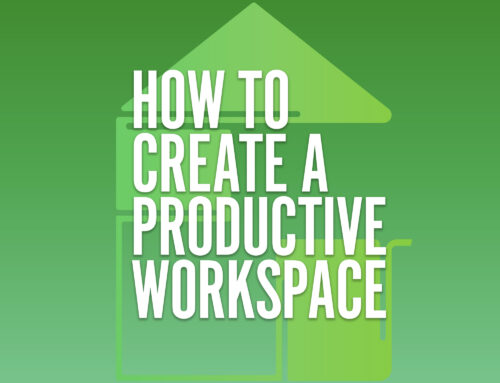Studies show that regular exercise is good for you. It helps prevent excessive weight gain, improves your mood, boosts your energy, can prevent certain health conditions and even helps you fall asleep faster. Plus, recent research from Kaiser Permanente in southern California has shown that regular exercise also helps decrease the severity of COVID-19.
But exercise also comes with risks. The National Safety Council recently found that after the 27 percent decrease in sports and recreational injuries in 2020 (likely resulting from the COVID-19 pandemic), injuries rebounded 20 percent in 2021 alone.
To help you prevent injuries, we spoke to three local experts to learn what you need to know before you hop on a bike or pick up those weights so you can remain safe while improving your health.
Be prepared
First things first: whether it’s building a house or scaling a mountain, it’s important to think about the larger journey. Similarly, when starting out or resuming an exercise routine prepare in advance by setting realistic goals. If it’s your first time embarking on a fitness routine, you’ll need to ease your body into it.
“Your body is your own project,” explains Michael Berardino, owner of Just Lift Fitness in Bedford Hills. “So, you want to prepare, organize yourself and set realistic goals.”
And like any project, fitness requires the proper tools for the job. With exercise, that means proper clothing and footwear.
“We’ve had more people injure their feet from wearing horrible footwear,” says Faun Yodice, co-owner of Jax’D Fitness in Bedford Hills. “You cannot wear the same shoes for running and training.”
Both Faun and her husband/co-owner Josh say that people often follow the footwear trends they see online. But these trends aren’t necessarily for everyone. It’s important to wear shoes that support your feet properly.
Now you’re ready to exercise. But before you begin, prepare your body by warming up. Both warming up and cooling down are key to reducing injuries.
Don’t be a rock star
Whether your goal is to feel better, build muscle, lose weight or all three, your transformation will happen, but it won’t be overnight – and you shouldn’t expect it to.
“Don’t be a rock star,” Berardino cautions. “You’re not gonna be a rock star today. You’re not gonna be a rock star tomorrow. Three months or six months down the road, yeah, maybe you can be a rock star then.”
Doing too much too quickly can lead to injury. And while workouts should be tailored to each person’s individual needs and abilities, the rule stays the same: start with the basics and build from there.
The Yodices recommend kids and teens begin with cardio or HIIT (high-intensity interval training) workouts.
For seniors, they recommend upright exercises that focus on the core, like the elliptical, to improve balance and prevent falling. Swimming, they say, is also a good way to stay active while being easy on the joints.

Know how to prevent injuries
All three experts stress the importance of listening to your body, which includes knowing when to stop. After COVID-19 lockdowns ended, Berardino saw a lot of people pushing themselves past their limits at the gym, and fighting for that last rep.
“It may not hurt you while you’re doing it, but over a period of time, it will bring you discomfort,” he explains.
Lower back pain is a very common injury, particularly among teens, and it’s usually preventable by strengthening the core.
“Your core is the basis of everything you do,” Faun explains. “It’s how you sit when you’re at your desk or in the car and it’s how you walk – it’s your posture.”
The core consists of several muscles, including the rectus abdominis (a.k.a. six-pack abs/upper abs), the internal and external obliques, and the quadratus lumborum (located in the lower back). Even if your goal is to have a six-pack, it’s necessary to strengthen all parts of the core in order to have a strong support system and prevent lower back injuries.
Like lower back pain, shoulder injuries are also both common and preventable.
“Chest presses and shoulder presses, if not done safely and appropriately, can lead to a pretty nasty injury – not only temporarily, but even for the rest of your life,” Berardino warns.
Ultimately, some of the most enduring injuries can be prevented by simply using proper form, listening to your body and knowing when to stop. As Berardino says, “That one rep is not worth getting injured for.”
Invest in yourself
Another thing all trainers agree on is this: ask for help.
When starting out, they advise working with a personal trainer to prevent injuries, especially on new-to-you equipment, and to maximize the benefits of your workouts.
“We constantly change it up on our clients,” Faun says. “When we see that they’re plateauing, we kick it into high gear.”
If one-on-one training isn’t for you, then consider a group class or exercising at home. If choosing the home route, the internet can be a great resource for fitness advice and workouts – if it’s coming from qualified sources. (See below: “The social media conundrum” for more details.)
The three trainers also highlight the importance of variety for the best results.
“Don’t do the same routine in the weight room consistently,” Berardino advises. “You want your body to always be guessing.”
And, it’s important to remember that investing in yourself also happens outside the gym.
“People think that just coming into the gym, moving around a bit and pushing some weights is going to be their golden ticket to being healthy,” Berardino says. “ Don’t neglect nutrition.”
Maintaining a healthy lifestyle also means eating well and getting enough sleep. And, it’s important to note, health also can’t be measured in weight – plus, focusing too much on the scale can be discouraging. Berardino encourages new gym-goers to put the scale away and focus on how they feel.
“When you start training and lifting weights, you’re going to build a little muscle,” Berardino explains. “The muscle might build a little quicker, so the scale might not budge for a while. But at a certain point, it starts balancing out and the weight starts coming off.”
In the end, regular exercise is an integral part of living a long, healthy life. Just be safe, okay?

(Sidebars)
Hey teens, this part’s for you
Teens often go to the gym with a very specific goal: to impress their friends. But, according to all three trainers, that’s the wrong approach. Teens, they explain, are the largest group prone to injury at the gym, especially those who haven’t learned proper form with exercises like deadlifts and bench presses.
Faun recommends teens start out with the basics like squats, lunges, push-ups and curls. These exercises may not seem the most thrilling (or impressive), but they give you the foundational skills. From there, you can build up.
She also says it’s important to vary your exercises. For teens, especially, having a mix of weight training and cardio is ideal.
The social media conundrum
The internet can actually be a great place to get information – if you know where to look. All three experts say that while social media has motivated more people to exercise, it has also negatively impacted the fitness industry.
“These people aren’t going to help you unless you have the exact same goal and the exact same body type,” Berardino says. “Yet everyone’s different.”
Not only are fitness influencers often misleading in their exercise tips, but many of them are simply unqualified. A 2019 study by the University of Alberta analyzed the features and content of popular fitness blogs, and the researchers found that only 16.4 percent of bloggers report having fitness or exercise certifications, yet 57 percent of them claim to be fitness or exercise professionals.
Still, there are some online resources that can be helpful. Berardino recommends finding influencers who explain the science behind working out, like Jeff Cavaliere, the owner of ATHLEAN-X.
“He’s strictly about science,” Berardino explains. “He’ll draw on his skin saying, ‘This is the muscle we’re working.’ He’ll show you exactly how to get that maximum contraction.”
When using social media to find workout routines, you must stay vigilant. That means checking influencers’ certifications, looking at reviews, and doing your own research before following someone’s advice.
This article was published in the May/June 2023 print edition of Katonah Connect.

Emma Richman
Emma Richman is a college student who interned at Katonah Connect in 2023. Emma’s passion for writing and storytelling is what led her to journalism. Outside of her writing, Emma is a competitive swimmer who, in high school, enjoyed singing with her a capella group, The John Jay Treblemakers, tutoring middle school students and playing alto saxophone.










